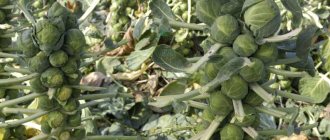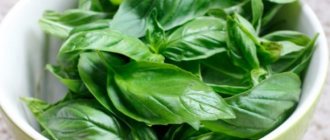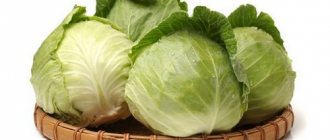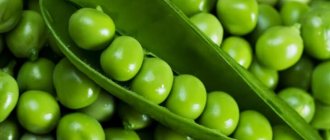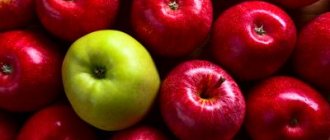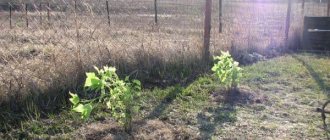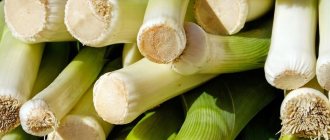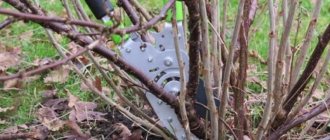Why drying?
– Timofey Mikhailovich, how to determine the ripeness of onions and garlic? These terms depend on the variety and time of planting of the crop - winter or spring garlic?
“In this case, it is even useless to focus on the closest neighbors and see whether they remove these crops or not. The ripening time depends on the variety and the conditions in which it grew, namely: where the bed was located relative to the sun, how often it was loosened and fed. And many other factors influence the maturation of a culture. To accurately determine the timing of cleaning, I advise you to use a very simple rule. I will say that in onions and garlic, the ripeness of the heads is indicated by lodging and yellowing of 2/3 of the tops. Garlic has an additional symptom - the cover of the inflorescence cracks.
– How to properly dry vegetables so that they retain all their beneficial qualities?
– There are several options. You can immediately in the garden to bring it into the house already dried and clean. After harvesting, level the bed with a rake and arrange the onion and garlic heads in one layer. Place arcs over the bed and cover them with film so that possible heavy rain cannot wet the bed. On average, ripening lasts two weeks. Another way is to spread any material on the veranda and scatter onions and garlic on it in one layer. Before drying, remove the roots and tops of plants.
Onions have many faces. Which species are edible, and which are also beautiful? Read more
How to store onions in baskets
For this purpose, preference should be given to a real wicker basket, but if the harvest turns out to be too large, then you can use several similar specimens. It is necessary that the baskets are dry; to do this, you should expose them to the sun for a couple of days for proper drying. If the basket is used for the first time, you can be sure that the vegetables will be safe. When reusing, it is recommended to treat the container with 2% Bordeaux mixture, and each product will need to spend about half a liter.
Next, you need to dry the basket and only then put the onions into storage. The product can be filled to the top with onions, since the vegetable will not receive any damage due to its own gravity, therefore, no problems will arise. Why are these types of baskets a great option? You can periodically take out the product and inspect the condition of the bulbs through the cracks; if any vegetable begins to rot, it must be removed. In addition, you should also remove those bulbs that were located next to the spoiled vegetable.
Vegetable requirements
– Some housewives leave a long arrow of garlic, and then hang such a voluminous bunch in the kitchen. How many centimeters of stem should be left?
- For onions - a little more than 5 cm, so that the head can close, for garlic - 1-2 cm. Garlic is stored not only in bunches, but also the tops are left and then original vegetable round wreaths or braids are woven.
– You can’t cover your entire kitchen with braids. And if the harvest is large, then how to create suitable storage conditions for it at home or in the country?
– Well-dried vegetables can retain their taste and nutritional qualities until April and May. Onions are stored well at a temperature of about 18˚C in any room. It is advisable to place onion heads in wicker baskets or wooden boxes, scattered in 2-3 layers, or tie them into braids and hang them on the walls in the kitchen. But garlic has increased storage requirements. It can be preserved for a long time with minimal losses only at a certain positive temperature - no higher than 2–4˚С. Moreover, the refrigerator will not suit him either. Sometimes it is stored on the veranda or on a frost-free loggia.
Dachnaya and Charodey. What new varieties of onions and garlic appeared in 2019? More details
– Many people build a summer house with a basement to store supplies. Is this option suitable for garlic?
– Only if the humidity there is okay – it doesn’t exceed 60–70%. When there is an increased moisture content in the air, garlic immediately absorbs it and begins to germinate and then rot. Onions behave in exactly the same way.
How to store onions?
- First, the onions need to be selected and dried. At home, onions are stored in baskets, boxes, drawers, nets and even old nylon stockings. It is better to choose small boxes and crates (no more than 30 cm in height) and always have holes for ventilation. If you are going to put the onions in a bag or net, also add a layer of up to 30 cm.
- Do not store onions in plastic bags under any circumstances; they do not allow air and moisture to pass through, so the onions will quickly begin to rot.
- To preserve onions for as long as possible, you need to periodically inspect them and remove spoiled bulbs.
- If you find that the onion is damp, dry it again and put it in a new container.
Black steam or seeding
– What is the best way to deal with vacated onion and garlic beds? Leave them to rest until next season? How are you doing?
– Usually on July 25th my beds are cleared. I immediately sow them with tasty and juicy daikon radish, greens - cilantro, dill and lettuce. They have time to grow and produce a harvest.
Preserving winter garlic: 4 tricks Read more
Storing garlic for home storage
This vegetable can be called a record holder for long-term storage. If certain conditions are met, it lasts well all winter and we can use it until the new harvest.
How to prepare a vegetable for long-term storage
In order for garlic to be stored well, you need to prepare it properly.
Already during harvesting, you should pay attention to important points that will have a direct impact on quality storage:
- optimal collection time.
The heads harvested in time do not fall apart into cloves and are suitable for storage. Typically, gardeners grow two types - spring (or summer) and winter (or winter). Spring garlic is harvested when its leaves not only turn yellow, but also begin to fall to the ground. This usually happens in the first or second ten days of August. Readiness for winter harvesting is determined by the following signs: yellowing of the leaves and bursting of the skin of the inflorescences. The approximate time for harvesting winter garlic is the end of July; The signal for harvesting winter garlic is the straightening and cracking of the skin of the inflorescence on the control specimen. - It is necessary to remove the heads of garlic carefully, trying not to damage them. The plant is not pulled out of the ground, but dug out with a pitchfork or shovel. The earth is removed from the heads by hand. Do not shake the ground by knocking the heads against each other or other objects. Damaged heads are only suitable for recycling and will not be stored for a long time;
- The dug crop must be thoroughly dried, hung together with the leaves in a dry, ventilated place with the heads down.
In this case, the nutrients found in the leaves and stem will enter the head and improve its taste. Under favorable conditions, the drying time is at least 3–5 days; Dry the garlic for about a week and only then trim it - During the sorting of garlic, hollow, damaged (with scratches, peeled off skins, etc.), as well as heads with signs of damage to any disease (spots, growths, etc.) are rejected and divided into groups by size.
For long-term storage, select large heads of garlic, which are better stored
Which garlic is better for long-term storage - summer or winter?
Summer varieties have a higher shelf life than winter varieties. This is due to the number of covering scales: winter crops have much fewer of them, so they dry out faster when they lose moisture, and can also begin to mold or rot at high humidity and air temperature. Therefore, part of the winter garlic harvest is used for autumn planting, part is processed and a small amount is stored for use first. Usually winter crops are stored well until the New Year, then they begin to sprout and deteriorate.
Winter garlic (left) differs from spring garlic (right) in the presence of a strong stem, the number and size of cloves, and their location
Conditions of preservation
The main factors that affect the preservation of garlic are:
temperature. The optimal storage temperature for winter garlic is from -2 to +2 degrees. Higher temperatures may cause fruits to begin to germinate. At lower temperatures it will freeze. Significant temperature fluctuations lead to garlic losing its taste and beneficial properties. Spring grain can be stored at a higher temperature (but not higher than +20 degrees); air humidity. It should not exceed 80%. High humidity will cause the cloves to rot. If the storage location is too dry, that is, the air humidity is less than 50%, then the garlic will begin to dry out; illumination. It is better to store the harvest in a dark place
When storing in light, it is important to avoid exposing the heads to direct sunlight; air access. Excessive air access will cause the heads to dry out, so it is best to store the vegetable in open containers or boxes or canvas bags.
Master Class
- You can weave braids of different thicknesses, but then, when harvesting, immediately select the heads according to size. Small - in one direction, medium and large - in the other.
- Be sure to leave the tops. Dry the vegetables briefly - 2-3 days, so that the tops wilt slightly and become elastic.
- Remove the roots, clean the heads from adhering soil.
- A braid made from onions and even garlic will not be lightweight; to increase strength, use twine, a regular wide bandage, twine or any rope.
- Take the head with the longest and strongest stem.
- Tie a rope to its beginning.
- Braid your hair by inserting a new onion one at a time.
- Finish the work when 20 cm remains from the rope and tops. Tie the tops with a rope and make a loop on which to hang the braid.
- Do not hang it in the kitchen right away, let it dry in a ventilated area.
4 secrets of a good onion. How to grow quality crops Read more
Interesting
Colorful braids of onions and garlic will decorate the kitchen interior. Red onion varieties look most impressive. Additions of dried flowers - marigolds, cornflowers, wildflowers - will add a special chic. Of the vegetable crops, dried hot peppers are best combined with the heads. It’s a good idea to decorate such braids with a bay leaf - a useful seasoning will always be at hand.
By the way
This season, the abundance of rain in the Moscow region has had a negative impact on the onion harvest. But they benefited winter garlic; it was a great success.
Onion storage
Storing onions in baskets
For these purposes, it is better to choose a real wicker basket or several of them if you plan or you have already collected an impressive harvest of onions. The baskets should not be wet, and if this is the case, then dry them in the sun for two days, a day on one side (outer) and a day on the other (inner).
If you are using the baskets for the first time, then be sure that the onions will last a long time, but if you repeat them or for the third or fourth time, then you can first treat them with 2% Bordeaux mixture, using half a liter of solution for each basket, then dry them as described above, and only after that put the onions into storage.
You can put a lot of onions, a full basket, they usually don’t get injured under their weight, so there shouldn’t be any problems with storage.
Why are wicker baskets a good option? Periodically, at least once a month, you simply take out the basket and examine the bulbs through the cracks; through them you can see when this or that bulb suddenly begins to rot. Then the onion will have to be sorted out, and all those in contact with the rotten onion and itself will have to be removed, and the rest will have to be put back into storage.
Often onions are stored at normal home, room temperature, under a table or in a pantry, or on a heated balcony or loggia, and they lie there almost until the new harvest, that is, for a very long time.
Storing onions in paper bags. © canida
Advice. To store onions, it is better to use natural baskets rather than plastic ones, they can be harmful and are often used only for short-term use. For their production, low-quality materials may be used that release harmful substances into the products.
Storing onions in boxes and crates
A good option is boxes that have drainage holes on the sides, for example, boxes for crackers and similar products, which are also made so that the products stored in them do not get wet, and air circulates. In cardboard boxes with drainage holes at home, it is advisable to store no more than a bucket of onions in one box.
You need to put dry newspaper at the bottom, it will absorb excess moisture if there is any, and replacing the newspaper with a new one is very simple if you suddenly notice that the lower bulb has begun to deteriorate.
By the way, in this option it is impossible to look through the onions, as if through the bars of a basket; once a month you will have to sort through the entire batch and reject those that are beginning to rot and all those bulbs that touched the rotting ones.
Wooden storage boxes are usually used to store apples and other products. It’s great if the box is new and well dried. Storage in boxes provides two options - if the bulbs are small and can slip through the gaps between the boards of the box, then you can line them with a plastic mesh to protect them from rodents, then you can control the condition of the bulbs and they will not spill out.
The second option is without a net, but you need to put a layer of cardboard on the bottom, otherwise the upper bulbs will damage the lower ones under their own weight, and they will quickly begin to rot, and you will have to sort through all the products (if something happens, replacing the cardboard with a new one is quite simple and quick).
Storing onions in a braid. © Heddi
Storing onions in nets
We see onions in nets in markets most often; usually the weight of such packaging is five or ten kilograms. Previously, when I was smaller, the nets consisted of nylon, and the onions were stored there longer, now they are plastic, often blue or orange, and the onions are stored worse in them.
The advantage of storing in nets is that you don’t need to think about where to look for an option for placing onions: such a net can be placed or hung in a pantry or on a balcony, but if it is not nylon, but plastic, then you will have to check your luggage every month. But this option is perhaps the simplest - I bought it at the market, brought it home, hung it on a hook - and that’s it.
Onions are and have been stored in nylon stockings, it is believed that this is almost the best way of storage, the air is ventilated, and you won’t be able to stuff too many heads into the stocking, therefore, they do not put too much pressure on each other, dents do not form and the onion does not begin to rot in the stocking, if it ever starts, it will be very long, and it can lie or hang like that almost until the new harvest. In addition, if the stockings are transparent, it is very easy to observe the condition of the bulbs (if they are rotten, then immediately remove the spoiled ones).
Storing onions in braids
Braids - probably few people know how to weave braids from onions, but before it was almost a decoration for the house: onions were dug up along with the green mass, dried and braided into braids, which were stored on an ordinary clove; such onions were also stored very a very long time.
What you cannot store onions in is plastic bags, especially if they are tightly tied, there is no air, moisture does not circulate and the onions deteriorate very quickly and rot.

